Table Of Content
- Why Fermentation Is Central to Korean Cuisine
- What Is The Historical And Cultural Significance Of Korean Fermentation Basics?
- What Are The Most Common Korean Fermentation Basics?
- What Are The Core Korean Fermented Foods & Their Basics?
- 1. Jang — Soybeans, Meju & the Jang Family
- 2. Gochujang — Fermented Chili Paste
- 3. Kimchi — Lacto-Fermented Vegetables
- 4. Jeotgal — Fermented Seafood Condiments
- What Is The Science Behind The Korean Fermentation Basics?
- What Are The Key Bacteria Behind The Korean Fermentation?
- 1. Lactic Acid Bacteria (LAB):
- 2. Molds:
- 3. Bacillus subtilis:
- 4. Halophilic bacteria:
- 5. Microbial succession
- What Are The Key Elements Of Korean Fermentation Basics?
- 1. Salt concentration
- 2. Temperature
- 3. PH
- 4. Oxygen exposure
- How To Ferment Korean Foods At Home (Step-By-Step)
- Ingredients:
- Methodology:
- Adapting to Your Climate/Region
- What Are Some Important Troubleshooting Tips?
- 1. Mold, Sliminess, Off-Odors
- 2. If Your Kimchi Turns Too Sour:
- What Are Some Necessary Food Safety Tips?
- What Do The Clinical Studies On Korean Ferments Tell Us?
- Is Fermentation A Cultural Tradition In Korea?
- Frequently Asked Questions (FAQs)
Fermentation sits at the heart of Korean cuisine. It is a living, breathing tradition that turns humble ingredients into deeply flavorful, nutrient-rich staples.
From the earthy complexity of doenjang (soybean paste) to the fiery tang of kimchi, Korean fermented foods embody balance, patience, and connection to nature.
This guide dives deep into Korean Fermentation Basics exploring its cultural roots, microbiological science, home methods, troubleshooting, and health benefits.
Whether you’re a curious home cook or a fermentation enthusiast, this article blends tradition with practical know-how to help you ferment confidently anywhere in the world.
Why Fermentation Is Central to Korean Cuisine
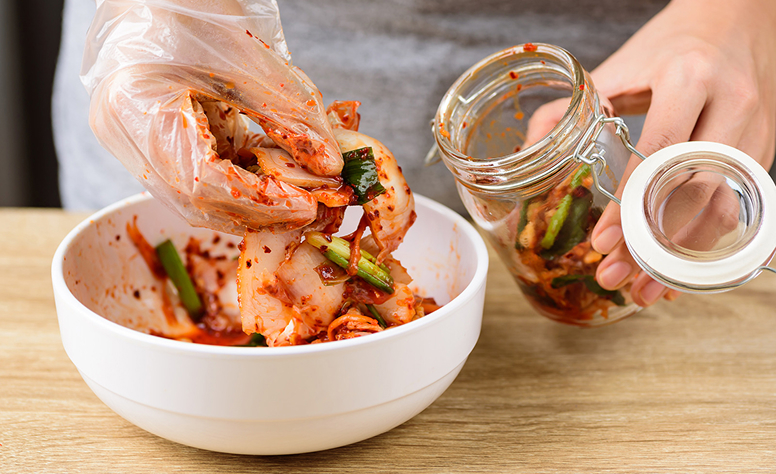
Fermentation isn’t just a cooking technique in Korea, it’s a philosophy of life.
Long before refrigeration, Koreans relied on fermentation to preserve seasonal harvests, ensuring food security through the harsh winters.
Today, fermentation remains the soul of the Korean table, enriching dishes with depth, nutrition, and heritage.
What Is The Historical And Cultural Significance Of Korean Fermentation Basics?
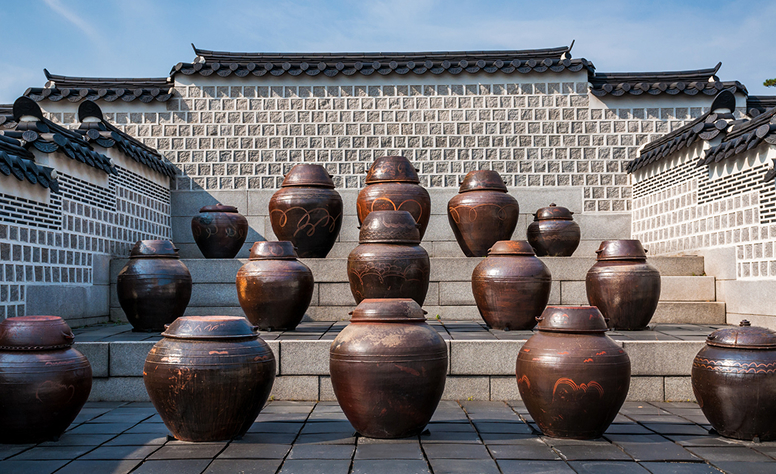
The story of Korean fermentation stretches back thousands of years. Archaeological findings suggest fermented soy and fish products were consumed as early as the Three Kingdoms period (57 BCE – 668 CE).
Over time, this art evolved into household rituals. Each family maintained a jangdokdae. It is an outdoor platform lined with onggi (porous earthenware jars) where fermenting pastes and sauces breathed with the changing seasons.
Autumn was traditionally a time of kimjang. It was the communal preparation of kimchi before winter.
Neighbors gathered to salt cabbages, mix spice pastes, and share stories. Recognized by UNESCO as an Intangible Cultural Heritage, kimjang symbolizes community, cooperation, and respect for nature’s cycles.
Even today, modern Koreans honor these traditions while integrating technology, proving that fermentation is both timeless and adaptable.
What Are The Most Common Korean Fermentation Basics?
Korean fermentation balances saltiness, acidity, umami, and depth through controlled microbial activity.
The process celebrates patience. You need to let microbes like Lactobacillus, Bacillus subtilis, and Aspergillus oryzae work slowly to develop intricate flavors.
Unlike some global counterparts such as Japanese miso or European sauerkraut, Korean ferments emphasize boldness — layering spice, garlic, and chili to create harmonies between heat, sourness, and savoriness. Each ferment — whether jang, kimchi, or jeotgal — contributes a distinct sensory signature that defines Korean cuisine.
What Are The Core Korean Fermented Foods & Their Basics?
At the heart of Korean fermentation lie four cornerstones: Jang, Gochujang, Kimchi, and Jeotgal. Together, they form the flavor DNA of Korean cooking.
1. Jang — Soybeans, Meju & the Jang Family
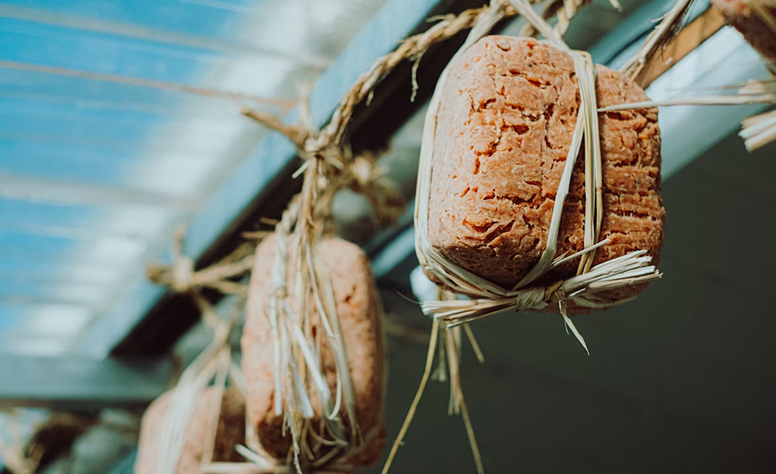
“Jang” refers to the family of soy-based ferments, including doenjang (soybean paste), ganjang (soy sauce), and cheonggukjang (fast-fermented soybean paste).
Their foundation is meju. You add blocks of boiled, crushed soybeans naturally inoculated with molds and bacteria as they dry.
According to research in Fermentation (MDPI, 2024), meju hosts a dynamic microbial ecosystem dominated by:
- Bacillus subtilis
- Aspergillus oryzae
- Mucor species
These break down proteins into amino acids and peptides, producing rich umami flavors.
After meju is sun-dried and aged in brine for months, it separates into ganjang (liquid soy sauce) and doenjang (solid paste).
Traditional fermentation in onggi jars allows air exchange, promoting beneficial microbial growth while preventing spoilage. Modern producers still rely on this ancient technique for authenticity and flavor depth (Oh et al., SpringerLink 2024).
2. Gochujang — Fermented Chili Paste

Gochujang, Korea’s iconic red pepper paste, combines meju powder, glutinous rice, gochugaru (Korean chili flakes), and salt. The starch from rice is enzymatically converted into sugars, which feed microbes, while chili and salt control unwanted bacteria.
Fermented for 6 to 12 months in sunlight, gochujang develops a slow-building heat balanced by sweetness and deep umami. The Aspergillus oryzae enzymes from meju drive the breakdown of proteins and starches, creating the characteristic sticky, glossy texture.
As Great British Chefs notes, gochujang isn’t just a condiment — it’s the heart of countless Korean dishes like bibimbap, tteokbokki, and bulgogi, symbolizing the country’s love for spice and fermentation.
3. Kimchi — Lacto-Fermented Vegetables
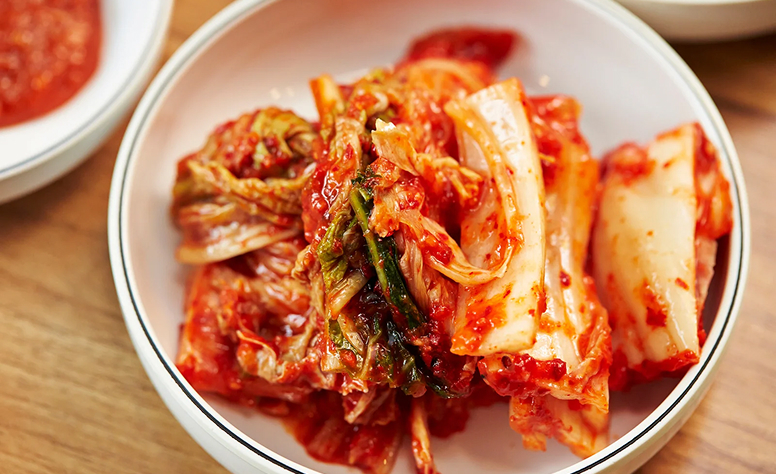
No discussion of Korean fermentation is complete without kimchi. Made from napa cabbage (baechu), radish, or cucumber, kimchi is fermented through lactic acid bacteria (LAB) that thrive in mildly salted environments.
The fermentation begins with Leuconostoc mesenteroides, producing CO₂ and mild acids, followed by Lactobacillus plantarum and Lactobacillus brevis.
These dominate as acidity increases (Critical Reviews in Food Science & Nutrition, Taylor & Francis). This succession transforms crisp vegetables into tangy, effervescent bites loaded with probiotics and antioxidants.
Traditional kimchi recipes vary regionally — southern provinces favor saltier, spicier profiles, while northern styles lean toward lighter, less spicy versions like dongchimi (water kimchi). Each reflects the interplay of geography, season, and family heritage.
4. Jeotgal — Fermented Seafood Condiments
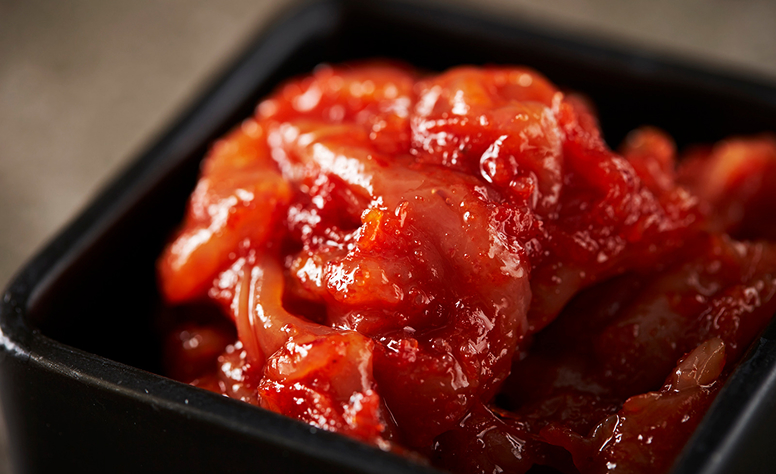
Jeotgal encompasses salted, fermented seafood such as shrimp (saeujeot), anchovy (myeolchi jeot), and oyster (gul jeot). Rich in amino acids and minerals, jeotgal is often used to season kimchi or jang.
Fermentation relies on high salt (15–25 %) to suppress pathogens while allowing halophilic bacteria and enzymes from seafood to generate complex umami compounds. According to ScienceDirect (Healthy and Safe Korean Traditional Fermented Foods), jeotgal provides a unique marine depth that enhances many Korean dishes.
What Is The Science Behind The Korean Fermentation Basics?
Behind the art lies a fascinating science. Korean fermentation transforms raw materials through intricate biochemical and microbial processes, creating safe, flavorful, and nutritious foods.
What Are The Key Bacteria Behind The Korean Fermentation?
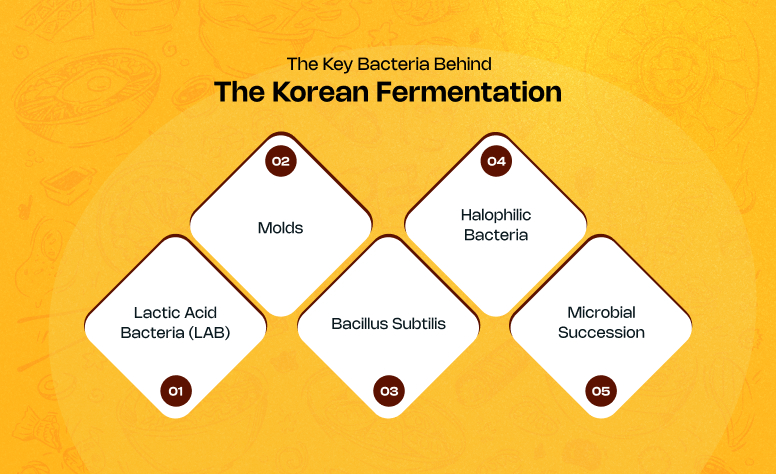
The star players of Korean fermentation include:
1. Lactic Acid Bacteria (LAB):
Leuconostoc, Weissella, Lactobacillus, and Pediococcus drive kimchi’s tang and fizz by converting sugars into lactic acid.
2. Molds:
Aspergillus oryzae (koji mold) and Rhizopus species thrive in meju, producing enzymes that break down starches and proteins.
3. Bacillus subtilis:
Responsible for ammonia-like aromas in soybean pastes; it contributes to amino acid formation and deep savory flavors.
4. Halophilic bacteria:
In Jeotgal, salt-tolerant species like Tetragenococcus halophilus aid in flavor maturation.
5. Microbial succession
The natural replacement of one microbial community by another is essential.
In kimchi, early heterofermentative LAB produce mild acids and CO₂; as the environment acidifies, homofermentative Lactobacillus plantarum dominates, stabilizing the ferment.
This sequence ensures balanced acidity and complex taste.
What Are The Key Elements Of Korean Fermentation Basics?
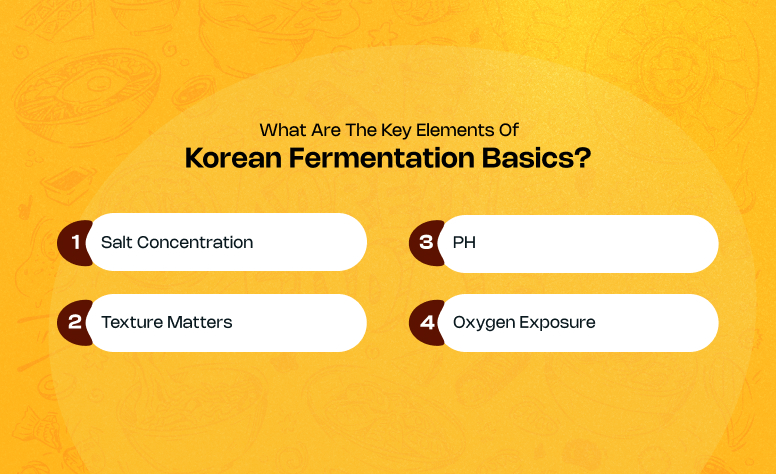
These are the few elements Korean fermentation depends on:
1. Salt concentration
Usually 2–5 % in vegetable ferments; 10–20 % in soy or seafood ferments. Salt controls undesirable microbes and draws out water for brine formation.
2. Temperature
15–20 °C suits kimchi’s cool fermentation, promoting crisp texture and balanced acidity. Higher temperatures (25–30 °C) favor faster fermentation but risk softening vegetables or over-acidification.
3. PH
As LAB activity progresses, pH drops below 4.5 — a safe threshold that prevents harmful bacteria.
4. Oxygen exposure
Kimchi prefers anaerobic conditions (submerged vegetables), while meju benefits from airflow to encourage mold growth.
Traditional onggi jars naturally regulate these conditions. Their microporous clay allows slow oxygen exchange, stabilizing microbial communities — a natural “smart container” long before modern technology.
How To Ferment Korean Foods At Home (Step-By-Step)
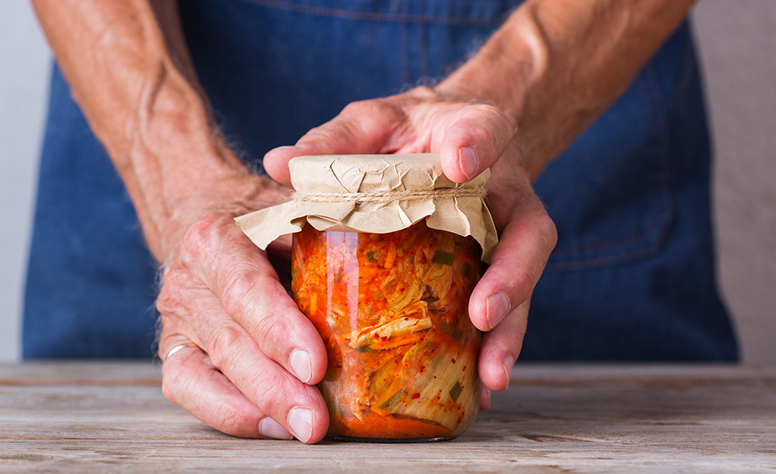
Fermenting at home is both rewarding and educational. It is a hands-on way to connect with Korea’s centuries-old culinary wisdom.
With a few essential tools and attention to hygiene, you can recreate authentic flavors even outside Korea.
To begin, you’ll need:
- Containers: Glass jars, ceramic crocks, or traditional onggi clay jars. Onggi’s microporous texture allows ideal air exchange and moisture control.
- Weights: To keep vegetables submerged during fermentation (glass or stone weights work well).
- Lids or cloth covers: Cloth lets gases escape while preventing dust; air-tight lids are suitable once active bubbling slows.
- Salt: Use non-iodized sea salt — iodized salt can inhibit fermentation microbes.
- Water: Filtered or dechlorinated water helps avoid killing beneficial bacteria.
- Starter cultures: While natural fermentation is traditional, some modern makers use a “mother brine” or previous batch as a probiotic inoculum.
(Pro tip: If using store-bought kimchi or doenjang as a starter, choose unpasteurized products with visible bubbling or strong aroma, signs of live cultures.)
Ingredients:
- 1 medium napa cabbage (about 1 kg)
- ¼ cup non-iodized salt
- 1 tablespoon sugar
- Rice flour -1 tablespoon
- 1 cup water
- 3 tablespoons gochugaru (Korean chili flakes)
- 5 garlic cloves, 1 knob of ginger, 2 green onions
- 2 tablespoons fish sauce or saeujeot (optional)
Methodology:
1. Cut the cabbage into quarters, sprinkle with salt between leaves, and soak for 2–3 hours until wilted.
2. Rinse and drain thoroughly
3. Make a paste by cooking rice flour with water; cool it, then mix in garlic, ginger, chili, sugar, and fish sauce.
4. Coat cabbage evenly, pack into jar, pressing down to submerge in its own brine.
5. Leave at room temperature (15–20 °C) for 1–2 days until lightly bubbly, then refrigerate to slow fermentation.
Adapting to Your Climate/Region
Fermentation reacts to the environment. The temperature, humidity, and altitude affect results.
- Tropical climates (e.g., India, Southeast Asia): Shorten fermentation time, use cooler indoor spaces or partial refrigeration. Slightly raise the salt (by 0.5–1 %) to prevent over-acidification.
- Cold climates: Extend fermentation periods or use warm kitchen corners. Some enthusiasts use seed-heating mats for stable warmth.
- Dry climates: Keep jars loosely covered to prevent moisture loss; add extra brine if vegetables dry out.
- Ingredient substitutions: If Korean radish or gochugaru aren’t available, use daikon radish and mild chili flakes blended with paprika for color.
(Extension: Oregon State University’s “Kimchi Basics” recommends 2 % salt and fermentation between 18–21 °C for crisp texture an ideal benchmark for global climates.)
What Are Some Important Troubleshooting Tips?
Even experts encounter fermentation hiccups. Understanding the “why” behind issues helps you rescue or safely discard batches.
1. Mold, Sliminess, Off-Odors
- White film (kahm yeast): Harmless. Skim off, clean jar rim, and continue fermenting.
- Fuzzy mold (blue/green/black): Discard entire batch — indicates contamination.
- Sliminess: Usually due to excess sugar or low salt; adjust ratios next time.
- Rotten smell: Result of spoilage bacteria — unsafe to eat.
*(Source: Korean Cultural Center NY; ScienceDirect 2018 study on kimchi microbiology.)
2. If Your Kimchi Turns Too Sour:
- Mix with fresh kimchi to balance acidity.
- Use over-fermented kimchi in stews (kimchi-jjigae) or fried rice.
- For jang, refrigerate to slow reactions.
Remember: acidity isn’t failure — it’s part of fermentation’s flavor spectrum.
What Are Some Necessary Food Safety Tips?
Modern science supports what Koreans have known for centuries: fermented foods heal the body from within.
- Always sanitize tools and jars before use
- Maintain salt at 2–5 % (vegetables) or 10–20 % (soy/seafood).
- Keep fermenting foods submerged to avoid oxygen exposure.
- Ideal final pH < 4.6 for safety.
- When unsure throw it out. Safety first.
What Do The Clinical Studies On Korean Ferments Tell Us?
According to a 2022 MDPI review (Fermented Foods of Korea and Their Functionalities), fermented soy pastes and kimchi contain high levels of bioactive peptides, amino acids, vitamins B and K, and antioxidants.
Studies published in ScienceDirect and SpringerLink show that these compounds exhibit anti-inflammatory, antimicrobial, and cholesterol-lowering effects in lab and animal models. Regular kimchi consumption correlates with improved digestion and immune regulation.
Fermented foods introduce live beneficial bacteria like Lactobacillus plantarum and Leuconostoc mesenteroides to the gut. These probiotics help balance intestinal flora, potentially easing bloating and improving nutrient absorption.
However, effects vary individually; pasteurized commercial products may contain fewer live cultures. Choose raw, refrigerated, or homemade ferments for maximum probiotic value.
Is Fermentation A Cultural Tradition In Korea?
In Korea, kimjang remains a cherished annual ritual. Families gather every autumn to prepare large quantities of kimchi.
Additionally, it symbolizes unity and generosity. UNESCO describes it as a practice that “reinforces family cooperation and neighborly bonds.”
Cities like Seoul and Gwangju host public kimjang festivals where volunteers make tons of kimchi for local charities. It is a living reminder that fermentation nourishes both body and community.
Modern Innovations & Commercialization
Today, Korea’s fermentation industry blends ancient knowledge with modern science.
Startups are experimenting with controlled fermentation chambers, selected starter cultures, and global flavor fusions (e.g., turmeric gochujang or vegan doenjang).
Universities like Yonsei and Seoul National University are researching microbial genomics to optimize fermentation efficiency and export-ready safety standards — proof that Korea’s living tradition continues to evolve.
Frequently Asked Questions (FAQs)
Fermentation transforms ingredients using microbes (especially lactic acid bacteria) to preserve, develop flavor, and create foundational condiments like jang and kimchi that define Korean cuisine.
Kimchi, doenjang, or gochujang — all forgiving and beginner-friendly.
Use a digital scale; 2–5 % of total weight for vegetables is ideal. Too little salt encourages spoilage.
Kimchi: 15–20 °C; Jang: 20–25 °C during active stage, then cooler aging. Gochujang: sunlight warmth, around 25 °C.
Yes — shorten time, increase salt slightly, and refrigerate early once desired flavor develops.
Skim harmless yeast; discard if colored mold or rotten odor appears.
Use clean vessels, sufficient salt, and keep food submerged; discard any suspicious batches.
Early Leuconostoc/Weissella → later Lactobacillus species dominate; meju involves molds and Bacillus.
Kimchi: 1–5 days active + storage; Doenjang: months–years; Gochujang: 3–12 months.
Yes, in moderation. Retain a small portion of brine or paste as inoculum — but monitor carefully.














